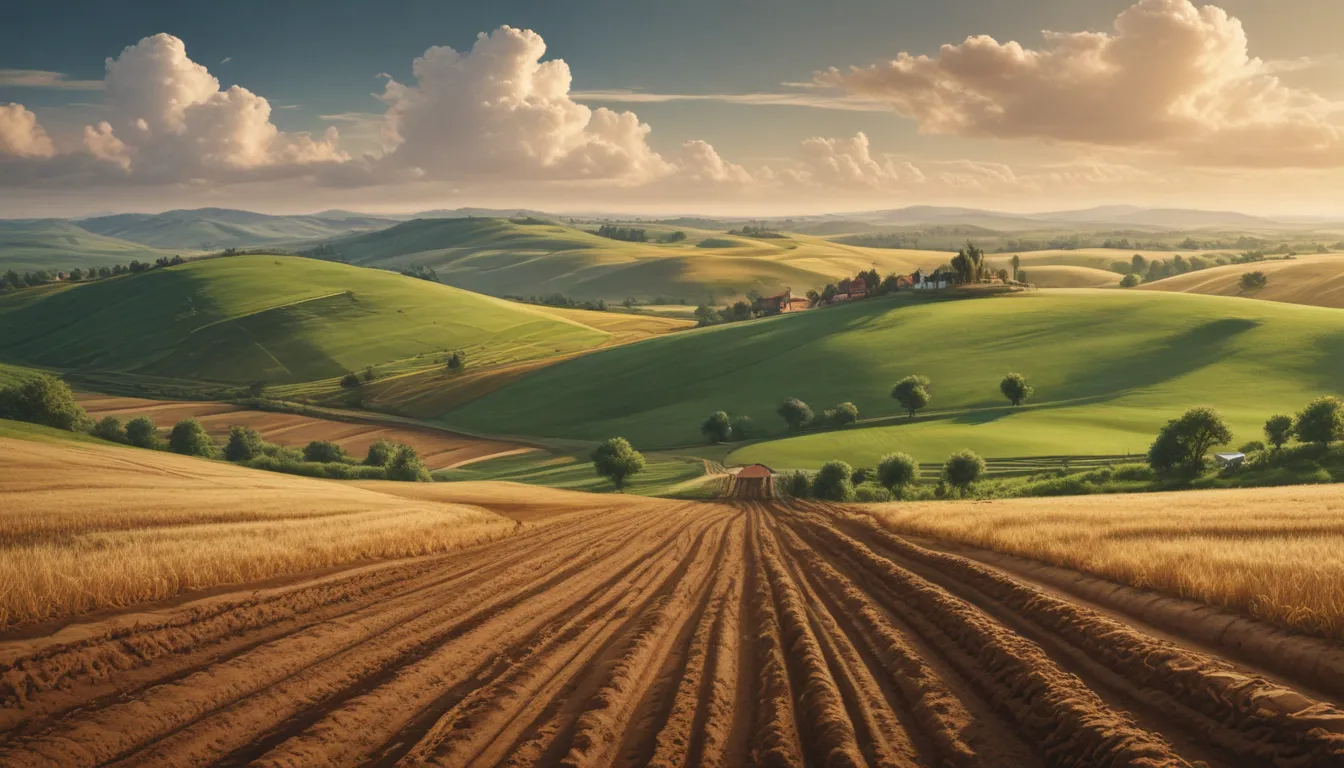A Note About Images: The images used in our articles are for illustration purposes only and may not exactly match the content. They are meant to engage readers, but the text should be relied upon for accurate information.
Are you curious about the vital role arable land plays in sustaining global food production? Arable land, also known as cropland or cultivable land, is a valuable resource that supports agriculture and provides food for our growing population. Join us as we delve into 9 captivating facts about arable land that will deepen your understanding and appreciation for this essential natural resource.
Understanding Arable Land
Arable land refers to land that is suitable for growing crops, making it indispensable for food security worldwide. Without arable land, meeting the demand for food and sustaining a healthy global population would be a significant challenge.
The Limited Availability of Arable Land
Only a small percentage of the Earth’s total land area is classified as arable land. This limitation underscores the importance of proper land management and sustainable agricultural practices to ensure the long-term productivity of these valuable resources.
The Varied Fertility of Arable Land
Not all arable land is created equal. The fertility of the soil can vary greatly based on factors such as climate, vegetation, and soil composition. Farmers must carefully optimize nutrients and conditions to maximize crop yields.
Threats to Arable Land
Rapid urbanization and population growth pose significant threats to arable land. As cities expand, agricultural land is often converted into urban landscapes, leading to the loss of valuable resources for food production. Striking a balance between urban development and preserving arable land is crucial.
Technological Advances in Arable Land Management
Technology has revolutionized how arable land is managed. From precision agriculture techniques to the use of drones and artificial intelligence, farmers can now monitor and optimize crop growth more effectively, maximizing yields while minimizing resource use and environmental impact.
Climate Change’s Impact on Arable Land
Climate change significantly affects arable land and agricultural productivity. Extreme weather events such as droughts, floods, and heatwaves can disrupt crop growth and lead to yield losses. Adapting farming practices to changing climatic conditions is crucial for ensuring the resilience of arable land.
The Benefits of Sustainable Farming Practices
Implementing sustainable farming practices is essential for the long-term health of arable land. Techniques like crop rotation, organic farming, and integrated pest management help maintain soil fertility, prevent erosion, and minimize the use of chemical inputs, preserving arable land for future generations.
The Global Distribution of Arable Land
Arable land can be found in diverse geographical locations worldwide, from fertile river valleys to expansive plains and high-altitude plateaus. This distribution underscores the adaptability of agriculture to different environments.
Meeting the Growing Demand for Arable Land
With the global population projected to reach nearly 10 billion by 2050, the demand for arable land is expected to rise significantly. Meeting this demand sustainably will require innovative agricultural practices, responsible land management, and effective conservation strategies.
In conclusion, arable land is a precious resource that plays a vital role in global food production. Understanding the characteristics, challenges, and importance of arable land is crucial for ensuring its sustainable use and securing the future of agriculture.
FAQs About Arable Land
- What is arable land?
-
Arable land refers to land suitable for growing crops, characterized by fertility and the ability to support agriculture.
-
How much arable land exists worldwide?
-
Approximately 11% of the Earth’s land surface is arable, with variations across regions and countries.
-
Why is arable land important?
-
Arable land is essential for food production, supporting farmers and ensuring global food security.
-
What are the threats to arable land?
-
Threats include urbanization, soil degradation, deforestation, climate change, and unsustainable farming practices.
-
How can we protect arable land?
-
Protecting arable land involves sustainable farming methods, land conservation measures, and responsible land use policies.
-
Can arable land be increased?
-
Through land reclamation and technology, the availability of arable land can be expanded with responsible land management.
-
How does arable land contribute to the economy?
-
Arable land supports agricultural industries, creates jobs, generates income, and contributes to economic development.
-
Which countries have the most arable land?
-
Countries like the United States, India, China, Russia, and Brazil have significant amounts of arable land.
-
What is the future of arable land?
- The future depends on sustainable management practices to ensure availability for future generations.
Arable land is a vital resource crucial for our survival and deserves our collective attention and care to ensure a sustainable and food-secure future. Explore the wonders of arable land and join us in nurturing this precious resource for generations to come.






